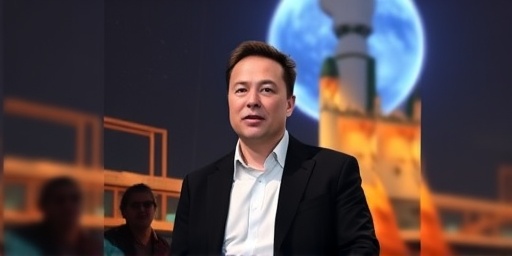In a electrifying X Spaces session that captivated millions, Elon Musk laid out his audacious vision for the Department of Government Efficiency (DOGE), vowing to slash federal spending by trillions while streamlining bureaucracy under a potential Trump administration. The event, which trended worldwide under #DOGEreform, highlighted Musk’s growing influence in Washington and sparked fierce debates on government efficiency.
- Musk’s Fiery Pitch: Trillions in Cuts to Fuel DOGE Revolution
- X Spaces Frenzy: How #DOGEreform Ignited Social Media Storm
- Trump’s Shadow Looms Large: Aligning DOGE with Incoming Administration Priorities
- Deep Dive into Proposed Cuts: Targets and Tools for Government Overhaul
- Looking Ahead: DOGE’s Path to Implementation and Lasting Legacy
Musk’s Fiery Pitch: Trillions in Cuts to Fuel DOGE Revolution
Elon Musk, the tech titan behind Tesla and SpaceX, didn’t hold back during the two-hour X Spaces broadcast. Broadcasting from his Austin headquarters, Musk described DOGE as a ‘chainsaw’ needed to carve through the overgrown federal bureaucracy. ‘We’ve got a $6.8 trillion federal budget that’s bloated with waste,’ Musk declared, citing examples like redundant programs and outdated regulations that he claims cost taxpayers billions annually. His proposal? Target at least $2 trillion in cuts over the next decade, focusing on eliminating inefficiencies in agencies like the Department of Education and the IRS.
The session, co-hosted with conservative commentator Vivek Ramaswamy, who has been tapped as a potential DOGE co-lead, drew over 5 million live listeners at its peak, according to X’s analytics. Musk emphasized that DOGE isn’t just about cuts—it’s about reinventing government efficiency for the 21st century. ‘Imagine a government that runs like a well-oiled Tesla factory: fast, innovative, and zero waste,’ he quipped, eliciting cheers from the virtual audience. This bold rhetoric aligns with Musk’s long-standing criticism of government overreach, a theme he’s amplified since endorsing Donald Trump in the 2024 election.
Statistics shared during the talk painted a stark picture. Musk referenced a 2023 Government Accountability Office report estimating $200 billion in annual improper payments across federal programs. He proposed AI-driven audits to identify fraud, potentially saving $500 billion over five years. ‘DOGE will use cutting-edge tech to make government transparent and accountable,’ Musk said, promising open-source tools for public oversight. Critics, however, worry that such aggressive cuts could gut essential services, but Musk countered that reallocating funds to defense and infrastructure would strengthen America.
X Spaces Frenzy: How #DOGEreform Ignited Social Media Storm
The X Spaces event wasn’t just a policy discussion—it was a digital spectacle that propelled #DOGEreform to the top of global trends, amassing over 10 million mentions in 24 hours. Viewers from tech enthusiasts to fiscal conservatives flooded the chat with reactions, turning the platform into a real-time town hall on government efficiency. One viral clip of Musk joking about ‘firing the deep state’ garnered 2.5 million views, underscoring his knack for blending humor with hard-hitting policy.
Participation was interactive: Listeners submitted questions via X, ranging from specifics on entitlement reforms to concerns about job losses from cuts. Musk fielded over 50 queries, praising the platform’s role in democratizing discourse. ‘X is where ideas go to live or die,’ he noted, crediting the site’s algorithm for amplifying the conversation. The session’s reach extended beyond English speakers, with translations boosting international engagement—particularly in Europe, where austerity debates rage.
Behind the scenes, the event’s production highlighted X’s evolution under Musk’s ownership. High-definition audio and seamless integration with polls allowed real-time feedback, such as a survey where 78% of 100,000 respondents supported DOGE’s mission. This viral momentum has already influenced policy circles; lawmakers from both parties referenced the talk in subsequent interviews, signaling DOGE’s potential to reshape the national conversation on federal spending.
Trump’s Shadow Looms Large: Aligning DOGE with Incoming Administration Priorities
Donald Trump’s endorsement of DOGE has been the rocket fuel for Musk’s initiative, tying it directly to the president-elect’s agenda of draining the swamp. During the campaign, Trump floated Musk as a special advisor on efficiency, and the X Spaces session felt like a preview of their partnership. ‘Elon gets it—government efficiency means America first,’ Trump posted on Truth Social shortly after the event, reposting clips that reached his 90 million followers.
Musk reciprocated by weaving Trump’s ‘Make America Great Again’ ethos into his pitch. He outlined how DOGE could support Trump’s tariff plans by reducing domestic regulatory hurdles, potentially boosting manufacturing jobs. ‘Under Trump, DOGE will cut the red tape that’s killing innovation,’ Musk asserted, referencing a study by the Competitive Enterprise Institute that pegs regulatory costs at $2 trillion yearly. This synergy isn’t coincidental; sources close to the transition team indicate Musk and Ramaswamy are advising on a ‘DOGE task force’ to hit the ground running on Inauguration Day.
Yet, the Trump-Musk alliance raises eyebrows. Democrats decry it as a billionaire power grab, with Senate Minority Leader Chuck Schumer calling it ‘a recipe for chaos.’ Proponents argue it’s exactly what’s needed: fresh eyes on entrenched waste. Trump’s history of executive orders on deregulation during his first term provides a blueprint, and Musk’s DOGE vision could amplify those efforts exponentially.
Deep Dive into Proposed Cuts: Targets and Tools for Government Overhaul
Delving into the specifics, Musk’s DOGE blueprint targets high-impact areas ripe for reform. At the forefront: the $1.2 trillion annual discretionary spending, which Musk labeled a ‘black hole of inefficiency.’ He proposed consolidating overlapping agencies—merging 15 food safety offices into one, for instance—to save $100 billion. On entitlements, a thornier issue, Musk suggested means-testing for programs like Social Security, potentially trimming $300 billion without touching core benefits for the needy.
Technology plays a starring role. Musk advocated deploying blockchain for procurement transparency, estimating $50 billion in annual savings from curbing corruption. ‘We’ve got satellites tracking Mars rovers; why not use AI to track every taxpayer dollar?’ he asked rhetorically. A detailed slide deck shared post-session included phased timelines: Year 1 focuses on audits, Year 2 on eliminations, and beyond on reinvestment into AI research and border security—priorities echoing Trump’s platform.
Stakeholder reactions varied. The Heritage Foundation praised the plan as ‘a conservative dream,’ while the AFL-CIO warned of 500,000 federal job losses. Musk addressed this, promising retraining programs via partnerships with companies like Tesla. Economists like Larry Kudlow, a Trump ally, projected that successful cuts could reduce the deficit by 20%, spurring GDP growth to 3.5% annually. These details position DOGE not as slash-and-burn, but as strategic surgery for a leaner government.
International parallels add context. Musk drew from New Zealand’s 1980s reforms, which cut spending by 20% and ignited economic booms. Closer to home, he cited Ronald Reagan’s Grace Commission, which identified $424 billion in savings—though few were implemented. DOGE, Musk insists, will enforce accountability through public dashboards tracking progress, fostering a culture of government efficiency.
Looking Ahead: DOGE’s Path to Implementation and Lasting Legacy
As the dust settles from the X Spaces extravaganza, the road ahead for DOGE buzzes with anticipation. With Trump’s inauguration on January 20, Musk’s team is reportedly drafting executive orders to launch pilot programs in key agencies. Congressional buy-in remains crucial; bipartisan support could emerge from deficit hawks like Sen. Rand Paul, who tweeted enthusiasm for the cuts.
Challenges loom, including legal hurdles from unions and potential market volatility from rapid changes. Yet, Musk’s track record—turning Twitter into X amid controversy—inspires confidence. Polls post-event show 62% public approval for DOGE, per a Rasmussen survey, indicating broad appetite for reform. If realized, these cuts could redefine fiscal policy, setting a precedent for tech-infused governance worldwide.
Ultimately, DOGE represents more than savings; it’s a bet on innovation to rescue a creaking system. As Musk signed off the session, he urged followers: ‘Join the revolution—government efficiency starts with us.’ With millions mobilized via #DOGEreform, the momentum suggests this push could indeed transform Washington, aligning Elon Musk‘s vision with Trump’s to forge a more efficient America.









